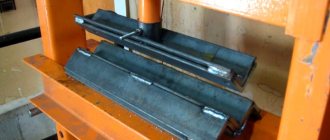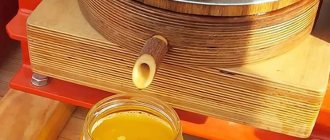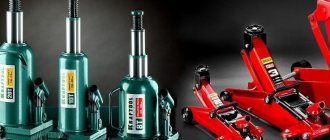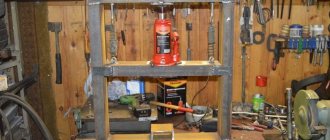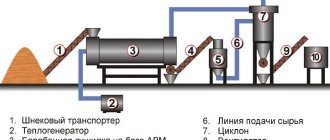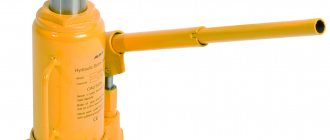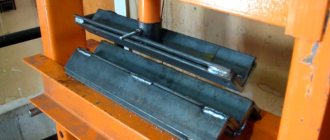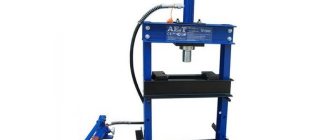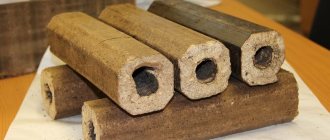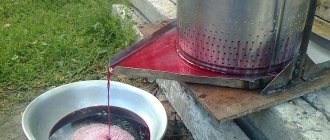Home craftsmen who make and repair various technical devices with their own hands often have to deal with pressing equipment. You can buy it on the modern market without any problems, but you can go the other way and make a functional and effective press with your own hands from a jack. By choosing this option for equipping your workshop with pressing equipment, you can manufacture a device at minimal cost that will fully meet the requirements for it, both in terms of technical and operational characteristics, and in size.
The press can be used for various purposes: for pressing bearings or bending metal. The design will be similar in any case, the only difference is the size and working attachments
Using a manual press made from a jack, which can fit in every workshop, you can successfully perform many technological operations at home, such as installing and dismantling bearings, pressing in and out of various bushings and shafts, and carrying out bending and simple stamping operations.
Purpose and scope of use of a hydraulic press
A hydraulic press is a device that exerts great pressure on the material being processed through little effort. This operating principle is based on Pascal's law, according to which the applied force acting on a certain area is transmitted throughout the entire volume and is equal in all directions.
The hydraulic press is used for stamping, pressing, extrusion, assembly, forging, bending
The hydraulic press device consists of two cylinders. When exposed to a smaller chamber, the pressure of the liquid in it increases, which is transmitted through a special channel to the larger chamber. The working fluid exerts pressure on the piston, which contributes to the effect of the element on the workpiece. Cylinders are usually located vertically, but there are also options that have horizontal placement. A special oil is used as the working fluid.
The installation is used for pressing, stamping, extrusion, assembly, forging, bending, and straightening of metal elements. You can buy or make your own cardboard press, which will be indispensable for packaging, briquetting, pressing and recycling materials made of plastic, paper and rubber. The equipment is characterized by versatility and can be used in different areas of life for repair, maintenance and preventive maintenance. Depending on this, the press has a certain design.
Operating principle of a hydraulic press
used at home
- stamping;
- forging;
- arching;
- extrusion of profiles;
- pressing of various objects.
In addition, pressing can be used for packaging various items made of wood, metal and plastic.
A hydraulic press is used in almost any industry, but it also finds its application in everyday life. The advantage of such equipment is the law of hydrostatics, which, in turn, facilitates the pressing of objects with any density. The principle of operation is that a hydraulic press presses on one specific point and thereby increases efficiency elsewhere on the object. Thus, it is possible to perform a variety of actions from bending to pressing an object with minimal effort.
The entire design includes a small number of parts, but the main ones are two piston cylinders, which differ from each other in their diameter. Inside the pistons there is ordinary water or oil. The liquid allows the law of hydrostatics to operate. This allows you to increase the efficiency and the object will already be subject to a force of several tons. The structure of a hydraulic press involves working in two planes, but most often a vertical type of equipment is used, and less often a horizontal model.
Options for using a hydraulic press at home
To squeeze metal elements out of the shell or base, you can buy or make a hydraulic press with your own hands for the garage. The equipment is also suitable for pressing out bearings and silent blocks that cannot be mounted and dismantled manually. Using such a device, you can straighten, join two elements, and bend a metal workpiece.
Helpful advice! When making a press with your own hands, you need to decide on the further purpose of the device, its dimensions, piston performance, weight and the possibility of installing a pressure gauge.
When manufacturing a hydraulic press for a garage, it is necessary to take into account the dimensions of the vehicle being serviced.
When creating a hydraulic press for a garage, you should take into account the size of the car. For passenger vehicles, it is enough to make a simple design, but for large vehicles it is better to make a more complex and larger unit.
The device is often used as a waste paper press. With your own hands you can make good fuel for the stove from old paper. For such purposes, it is enough to make a simple design with an average power rating, which will allow you to recycle a large amount of waste paper.
The equipment is also suitable for pressing sawdust. Such briquettes are good fuel for stove heating; they burn for a long time without producing smoke, creating intense heat. Instead of sawdust, coal chips are also suitable as a filler for the press. Such a unit will consist of a work table, a base, a power frame and a drive.
A good result is ensured by a self-created press for PET bottles, which turns the container into neat layers. The hydraulic tool can be used as a hay picker. In this case, the design is complemented by a frame frame made of timber or metal without an upper part. The element is fixed to the front using special fasteners. You will also need a transport pick-up and running gear.
Hydraulic press is also used for squeezing juice from fruits.
Press: homemade for metal work and household needs - options, drawings, manufacturing
Production is unthinkable without pressing operations, and modern production even more so: the processing of metals and materials in general by cutting produces waste, which ultimately has a significant impact on the environment and economy. In a home workshop, in a garage, it is also difficult for an individual entrepreneur working in metal to do without stamping, forging, straightening, bending, molding (flattening), pressing and pressing out blanks and parts, but the choice of presses for individual use is not wide, but the prices are scary. A press is no less necessary just on the farm - for squeezing juice, oil, baling hay. Virgin juice/oil can only be obtained from a special press (see below); You need to press the grapes into the wine especially carefully and with skill. And with the choice of ready-made presses and their prices, the situation is similar to the previous one. Finally, rising energy prices are forcing many homeowners to think about switching their autonomous heating to waste (alternative) fuel, or at least how to make fuel pellets or briquettes from existing household waste (straw, husks, husks, sawdust, shavings); This also requires a special press. This publication is devoted to how to make a press with your own hands for these and some other purposes (also see below).
Design of a homemade press made from a jack
Before you make a hydraulic press with your own hands, you should understand what components are included in its design.
To ensure the stability of the device, a strong and reliable lower part is required, which acts as the base of the installation. It looks like a platform and is made of massive thick rolled metal. For this purpose, channels and corners made of metal are mainly used.
As can be seen from the diagram of the press, the vertical parts of the structure are represented by racks. The elements are made from steel angles and welded to the base in such a way as to ensure a right angle between the elements. The height of the racks is calculated as the sum of the height of the jack, the length of its rod and the thickness of the workpiece. A fixed stop is fixed at the top of the racks. A corner is used to make it.
To create the necessary force on the surface being treated, a hydraulic jack is used. It will need to be secured to a movable stop. The jack is operated using a manual lever or an electric drive.
The height of the side posts must correspond to the sum of the thickness of the workpiece, the height of the jack itself and the length of its rod
The movable stop exerts pressure on the pressing mechanism. The element is made of steel strips or corners. A return device is used to move the stop to its normal position. It is represented by several springs. Their length and degree of stretching are calculated based on the parameters of the press.
Classic design
For production you will need:
The bottle lift itself;
- Channel;
- Steel sheet 4-5 mm thick;
- Two steel springs.
- The frame is welded from durable channel 5 mm thick. The corners are reinforced with brackets and anchors made of steel sheet of similar thickness.
Points of maximum pressure should be strengthened. To do this, the heels can be welded from a steel sheet. They are installed on the upper platform and on the moving element.
It is also recommended to install stops on the moving element to prevent the jack from slipping out.
The moving element is suspended on springs. Guide flags are welded to the ends, preventing vertical movement of the platform.
Construction is ready. The jack can be removed at any time and used separately from the press. Having a set of accessories (bushings, dies, first select the power unit with your own hands. A jack is often used for this. Its maximum load capacity determines the degree of pressure on the workpiece. The value of this parameter depends on the type of work being performed. For home use, you can choose a jack model with a load capacity from 7 to 20 tons.
Press with hydraulic cylinder and pump
An alternative option is to install a hydraulic cylinder and a pressure pump. This will ensure maximum comfort when doing work. But the cost of such a do-it-yourself design is much higher than that of a car with a jack.
The machine body is often made of steel channels and angles. The thickness of the material must be at least 2 mm. The design of a homemade hydraulic press with a jack or cylinder consists of the following components:
jack mounting block. Its movable rod can be placed in both the upper and lower parts;
auxiliary table. The workpiece will be installed on it. When making it yourself, it is recommended to provide for the possibility of changing the height relative to the jack;
Frame. A power unit and a support table are installed on it. At the bottom there are height-adjustable legs for greater stability.
It is not recommended to provide detailed construction drawings as different components may be used in its production. However, it is recommended that you familiarize yourself with the factory analogues in advance, based on the data received. in order to develop an optimal model.
Specially shaped fittings are used for various types of work. They must be made of durable tool steel, so making them yourself will be problematic. It is recommended to order from a professional turner.
Simple drawing of a hydraulic press
Construction of a homemade garage press: design characteristics
Before making a hydraulic press, you should decide on the type of installation. Depending on this, the equipment can be desktop or floor-standing. The first type of tool is located on a workbench, and the second is placed on a special pedestal. Such presses differ in size and load capacity. A self-made tabletop hydraulic press provides a force of up to 12 tons, and for a floor-mounted device this value reaches 25 tons.
The desktop design is more stable and mobile. Thanks to its small size, it does not take up much free space. This type of press is used for processing small workpieces.
The floor-mounted hydraulic press is characterized by its large size and heavy weight. To install it, you will need to build a special platform. Such a machine will cope with processing large metal elements, disassembling and assembling complex components.
A self-made hydraulic press for a garage can have a vertical or horizontal design
Important! To expand the functionality of a floor-mounted hydraulic press, it should be equipped with an electric motor.
You can make a complex structure that will be used to perform a wide range of tasks. However, making such an option will take a lot of time and require the use of specialized tools and equipment. As a garage hydraulic press, it is better to make a manual model equipped with a hydraulic pump and drive. This design is two-speed, its piston is characterized by mobility.
A self-made hydraulic press for a garage can have a horizontal or vertical design. The first type of device is used for straightening, cutting and bending individual metal elements. Vertical equipment is designed for unpressing and pressing parts. A self-made hydraulic press for waste paper is becoming increasingly popular.
Press diagram
Drawing of a homemade silent block press
Before purchasing a hydraulic jack itself to make a press for pressing in various silent blocks or bearings, select a suitable device design.
There are two great options for a hydraulic press:
- The hydraulic jack is mounted on the base of the working bed of the press and presses upward;
- The jack is installed on top of the bed. The device creates pressure, but in this case downward.
Most home craftsmen prefer the first version of the press. The second type of scheme is relevant for some plumbing work.
Please be aware that some hydraulic jacks are sometimes not designed to be installed upside down. Therefore, before choosing, make sure of this.
Press design features
The hydraulic press has several important design features that are taken into account during the creation of the drawing and directly during assembly of the device.
- Press stand. It is a frame inside which a hydraulic jack will apply pressure to the parts. Therefore, increased strength requirements are imposed on the frame. The frame must have a margin of safety so that the jack rod can effectively put pressure on the part, but not deform the frame. The bed additionally serves to create stability for your structure. It is better that the bed has the shape of a platform.
- The height of the hydraulic machine directly depends on the size of the hydraulic jack used, the required parameter of the free stroke of the rod and the height of the silent blocks. Don't forget to take into account the thickness of the table. According to the first diagram mentioned above, the force of the jack rod is transmitted to the part through a work table with a movable structure. It installs on top of the hydraulic jack on the bed. It moves up and down. The work surface is supported by guides installed on the sides.
- On both sides of the press hydraulic jack there are tension springs of sufficient power. One eye clings to the base of the frame, and the other to the movable work table. The function of the springs is to compress the jack to its initial position when the rod is not extended.
- If we consider the second diagram of the press, then the stop of the silent blocks being processed is the base of the frame. The jack is fixed on the working movable table of the machine, which is suspended on the frame using tension springs.
- In the two proposed press designs, a socket is made under the rod head. It needs to be made at the interface nodes. In the case of the first scheme, from below the table, and in the second scheme, from above the frame. For these purposes, you can use a section of a metal pipe. The main thing is that the element has the required diameter.
An important point when developing a hydraulic press with your own hands is the ability to adjust the free play at the device rod. You also need to adjust the height of the parts as necessary when processing them. To do this, you can use the following options:
- At the top of the homemade press frame you can place a screw-type drive, complemented by a steering wheel. When screwing in the screw with the plate, the clearance for the workpieces being processed inside the frame is reduced;
- Use a removable stop for a hydraulic press that looks like a movable working surface. It is fixed to the frame with bolts and nuts. To do this, you need to drill a hole with a certain height increment;
- Use replaceable inserts-linings made of durable metal profiles;
- Combine the above options.
Features of creating a hydraulic press with your own hands
A homemade design must perform the necessary list of tasks. A device that creates a force of 15-25 tons is sufficient. To make it, you will need to prepare a working drawing of a hydraulic press with your own hands from a jack with the dimensions of all structural elements (such a diagram can be found on the Internet). In this case, one should take into account the type of tool, which can be stationary or removable, the dimensions of the product, the piston stroke and the design of the frame.
Depending on the type of installation, the hydraulic press can be tabletop or floor-mounted
The working cylinder of the hydraulic press is located separately or built into the structure. In this case, it can be located in the upper or lower part. In the case of the first option, pressure will be applied to the lower surface of the base. If the operating element is located at the bottom of the frame, the pressure will be directed upward as a result of the operation of the main rod.
A jack is used as a hydraulic cylinder, which acts as the main working element. It should be taken into account that the tool can be presented in different designs. Therefore, when choosing a jack, it is necessary to decide for what purposes the press will be used and take into account the maximum force of the device.
However, keep in mind that a bottle-type industrial tool will not function upside down. Therefore, before making a press from a jack, it is necessary to finish the product. The design should provide for the installation of a socket that will be in contact with the hydraulic cylinder rod. To make it you need to use a piece of pipe.
The material for the frame is selected with a margin of safety, which will prevent damage to the frame when applying the maximum possible force. After completing the task of processing the workpiece, the rod must return to its original position. To do this, it is necessary to select the right springs, based on the degree of rigidity, so that they will be able to effectively fulfill their purpose. Their edges are attached to the movable upper and fixed lower parts of the base.
The material for the racks and bed must be selected with a margin of safety, this will prevent damage to the press when applying high pressure
The main element of a homemade press
Why is a hydraulic jack used to make homemade presses? This is due to the operating principle of such a device, based on one of the fundamental laws of physics. According to this law, a liquid, unlike a gas, does not compress under the influence of pressure and, accordingly, does not reduce its volume. A hydraulic jack makes it possible to transfer the force applied by the user of such a device to the object to be processed without loss of power.
The design of a hydraulic jack consists of two cylinders and pistons of different diameters. It is designed in such a way that the force created by the device on its working element is much greater than that which the user of such a device applies to its control element. This allows the use of hydraulic jacks to lift loads of even very significant weight, and in cases where such a device is installed on a hydraulic press, to create with its help a large compression force. It is also important that the efficiency of hydraulic jacks can reach up to 80%, which is a very good indicator.
Portable press device with a lower jack position
Meanwhile, if you decide to make your own press based on a hydraulic jack, take into account the disadvantages that lifting devices of this type have. The most serious disadvantage of a hydraulic jack is that when using it, it is impossible to accurately determine the height to which the rod of such a device is lowered. If this drawback is not particularly critical when lifting a load, then when using a hydraulic jack as the main working body of the press, after each working cycle the pressure in the jack chamber must be released in order to then re-approach the rod of the device to the workpiece.
Designing a homemade hydraulic press for a garage with your own hands
After choosing a jack, you should begin designing the frame on which the hydraulic cylinder will apply pressure. To do this, create a drawing of a hydraulic press with your own hands. And the dimensions are marked on it for each individual element of the device. The structure must be strong, since when the device is operating, the jack will exert both downward and upward pressure on it, trying to break the frame.
The base must ensure the stability of the equipment; the best solution is to make it in the form of a platform. The width of the table is determined based on the size of the product that will be processed on the press. However, it should not be less than the total width of all elements of the press equipment.
The height of the bed is calculated as the sum of the dimensions of the jack, the value of the free movement of the rod, the height of the parts intended for processing and the thickness of the mobile working platform.
The jack is fixed to the base. The focus for the products is the top of the frame. Using a movable table, pressure is transferred to the part. The surface is installed on top of the jack on the frame, along which it moves freely up and down with fixation on the sides.
1 - upper thrust beam, 2 - nut, 3 - lower mobile beam, 4 - stand, 5 - thread, 6 - jack, 7 - base
To ensure adjustment of the free movement of the jack rod, you can install replaceable pad inserts made of a solid or hollow metal profile. Another option involves making a removable support in the form of a desktop that moves. It should be secured to the frame using nuts and bolts or rods. To do this, it is necessary to make holes in the frame with a height less than the range of movement of the jack rod.
Another solution is to create a so-called screw press with your own hands using a drive with a steering wheel. It will be possible to reduce the clearance for the workpiece inside the frame by tightening the screw with the plate.
Helpful advice! To regulate the free movement of the rod, it is better to use a combination of several of the above options.
Required drawings
As for the drawings and dimensions for making a press, there are a lot of options and possibilities. First you need to decide what size car you will use the jack with press for.
Everything here is extremely simple, the larger the machine, the correspondingly larger the press will be, and therefore the more sophisticated the drawings.
You can use many online resources where there are a large number of drawings of any size. But in short, the approximate numbers in the drawings will be as follows:
- A-1800
- B-1000
- F-500
- L-300
- Kg-120
In almost all cases, the jack will be installed at the very bottom at its base. The press drawing will also indicate the dimensions of the bed.
The sequence of making a press with your own hands from a jack
Before you make a press with your own hands, you need to prepare a welding machine, electrodes, an angle grinder, a drill and drill bits. To finish removing burrs from metal structural elements, you will need a grinding machine. At the first stage, the frame for the press is assembled. The quality and efficiency of the work process depends on its strength and reliability. The bed will contain a working cylinder (in the form of a jack) and the workpiece being processed.
To manufacture the base of an installation designed for pressure up to 5 tons, a channel of standard size 8P is required
The material for the frame, its design and assembly option are determined based on the perceived pressure of the jack. According to the do-it-yourself drawing of the press, the base of the device is represented by a U-shaped rectangular frame made of a channel or a welded steel angle. The main force will be concentrated in the central part of the horizontal crossbars. The maximum possible stability of the structure can be achieved by welding it to the base of a metal plate 08-1.2 cm thick.
To make an installation frame designed for a force of up to 5 tons, you will need a channel of size 8P and two hot-rolled angles measuring 50x50 mm, which are connected by a solid weld or connected with rods every 25 cm. If the tool will take a force of up to 10 tons, a channel is required for the frame 10P and paired corners measuring 63x7 mm. To manufacture a press with the required compression force of 15 tons and above, you should use a 14P channel and a paired angle of 75x8 mm.
Important! A frame made from the above rolled metal will have a tenfold safety margin, which will facilitate the normal operation of the device - without destroying the frame.
Features of assembling a press frame for a garage with your own hands
All elements for the frame are connected to each other according to the drawing of the hydraulic press. First, the base is assembled, then the side parts and the top bar of the frame. It is important to ensure that the structure is geometric, in which all elements must be sides of a right angle.
Joining of workpieces occurs through welding work
Docking occurs by performing welded solid double-sided seams with cutting of products end-to-end. An alternative is to use cotter pins or bolts to assemble the parts. In this case, the maximum permissible shear load must be taken into account. With such a connection, the main load will be concentrated on the bolted connections. Therefore, it is important to correctly calculate their number.
Next, we make a do-it-yourself movable bar for a hydraulic forging press. For this, a square pipe or channel is used. A piece of pipe is welded in its central part, which will subsequently serve as a socket for the rod. The guides are made from two steel strips, the length of which must be equal to the outer width of the housing. The elements are attached to the side posts of the mobile structure using bolts.
A removable stop is made in a similar way. It is necessary to make holes in its guide parts to adjust the height of the working space. At the final stage, the jack and springs are installed.
How to Convert an Abdominal Jack to Work Upside Down
The most affordable option, which is used as a hydraulic cylinder for a do-it-yourself hand press, is a bottle-type jack. The main problem with such a tool is the inability to function in an inverted position. In this case, you can fix the tool permanently on the upper beam. In this case, the lower base will be used as a supporting element. Before you make a press with your own hands, you will need to modify the hydraulic mechanism.
To convert the jack to work upside down, it will have to be disassembled
There are several options for modifying a jack that can be used when assembling a homemade hydraulic press. The first consists of the additional installation of a 300 ml expansion tank. The container must be connected to the filler hole of the jack using a regular silicone pipe. To ensure that the element is tightly fixed, you need to use fittings for the oxygen hose, which can be purchased at any auto parts store.
The second option for remaking the jack involves disassembling the tool. To do this, completely drain the oil from it and bleed the plunger. Next, the upper clamping nut is twisted by clamping it in a vice. Then you need to loosen the outer glass using a rubber mallet. The element should come out of the seat ring, which is located at the base of the jack.
After the plunger lever there is a hole for collecting liquid. If the glass is not completely filled and in an inverted position, the hole does not come into contact with the oil. This is the main problem when using a jack for a homemade press. This can be solved using a tube, which should be pressed into place over the entire length of the glass.
The jack can be left in its original design. However, to ensure the functionality of the structure, the installation of an additional third beam will be required. It is attached to the side walls quite tightly, which facilitates the stationary position of the jack when creating pressure. The tool is fixed in an inverted position to the central part of the upper beam using M8 or M10 bolts.
The converted jack is fixed with bolts in an inverted position to the central part of the upper beam
How to make a press: manufacturing and installation of pressure pads
To work with large workpieces, you will need a large area of compression beams. In this case, the jack rod will not provide this, since when pressing, the force must be evenly distributed over the entire area of the surface being processed, eliminating the formation of deformations.
As clamping blocks for a hydraulic press you create yourself for a garage, you can use solid ingots, in which blind holes with threads are made, through which the elements are fixed to the structure of the press.
The best option is to make your own pads for the press with a jack. To do this, you can purchase four pieces of metal corner or two channels. Using the elements, a parallelepiped with open side faces is created. The joint areas that absorb the main force should be welded from the inside with a continuous seam. The remaining places are welded from the outside.
One of the faces must be sealed with a square insert, and the internal cavity must be filled with M500 concrete mortar. After the solution hardens, the block is welded on the other side. Thus, two incompressible elements are obtained.
Making your own press pads from channel bars is the best option.
A jack with a rod is attached to the upper block. To do this, a blind hole is made into which the heel of the tool is inserted with a minimum gap. Holes are also made here to fix the return spring mechanism. The lower block is mounted on an adjustable beam. For greater reliability and limiting shift, a pair of corners made of metal rods are welded onto it.
Installation of an adjustable support beam for a return mechanism for a homemade hydraulic press
The lower and upper beams must have the same cross-section. The elements differ only in design. To make the lower support element, two channels are used, which should be turned with their ribs outward. They must be placed on opposite sides of the racks and welded to their central part using inserts from corners or thick reinforcement.
Fixation of the beam on the racks is carried out using massive steel fingers. Under them, a series of circular cuts should be made at different heights with parallel placement in vertical channels. The diameter of the holes must correspond to the cross-section of the bolts.
Another structural element of a self-made hydraulic garage press is a spring mechanism, thanks to which the jack returns to its original position when the bypass valve opens. Simple springs for finishing doors, which can be purchased at a hardware store, are suitable for this.
The springs used for finishing the doors ensure the operation of the adjustable support beam of the return mechanism
The task is complicated by the upper pressure beam, which has significant weight, as a result of which the spring may not compress. You can get out of this situation by increasing the number of spring elements to 4-6 pieces, which is acceptable for a self-made desktop hydraulic press. You can also use more powerful elements designed for doors, which is more relevant for floor installations.
If there is no top block, the springs are attached to the jack rod. Fixation is performed using a washer whose internal hole is larger than the rod adjusting screw, but smaller than the diameter of the piston. The spring should be fastened through two small outer holes and fixed to the upper beam in the same way. The spring may not be installed strictly vertically. Excess length of the element can be compensated by its inclined arrangement.
Helpful advice! Welded hooks can also be used to secure the spring.
Converting a jack into a hydraulic cylinder
February 14, 2016
Hydraulic cylinders are used in plunger and drive type presses. The modifications vary in diameter. It is also important to note that most models have hinges. If we consider devices for plunger modifications, they use special sleeves.
The linings themselves are made of honed steel. If we talk about hydraulic cylinders for drive presses, they have pistons of different diameters. The lower part of the rod of the models is made with internal or external threads. On average, a high-quality hydraulic cylinder costs around 7 thousand rubles.
DIY model
An experienced milling machine operator will be able to make a hydraulic cylinder himself. A press (homemade), as a rule, is designed for a small load, so first of all, a small diameter piston is selected for assembly. Next, a trunnion is welded to it.
In order to hold the pad in place, sleeves are used. Next, to make a hydraulic cylinder for the press with your own hands, you will need a bushing. It should be attached to the piston. The average rod diameter is 60 mm. If we consider modifications for drive presses, then special bonks are soldered at the end of the cylinders.
Devices for 20 tons
Hydraulic cylinders of this type are manufactured for both plunger and drive presses. Their pistons are installed with a diameter of up to 50 mm. The cylinders themselves are made of heat-resistant steel.
Some configurations have a special seal. The thickness of the journal in this case depends on the width of the piston. The hinges for such models are of the spherical type. Some models have an intermediate stop.
On average, such a hydraulic cylinder costs about 7 thousand rubles.
30 ton models
Hydraulic cylinders for a 30-ton press are in demand at industrial enterprises for stamping various utensils. Many models use damped pistons. The rod itself is installed with a diameter of about 60 mm. A hydraulic cylinder of this type weighs around 22 kg. The rod is used without fastening.
Modifications for drive presses have a sleeve. Its diameter is adjusted to the piston. Flanges in all configurations are mounted on special feet. It is also important to note that hydraulic cylinders without a trunnion are available on the market. Their linings are made of honed steel. You can buy the model in stores at a price of 5 thousand.
rub.
Devices with welded stem
Hydraulic cylinders for this type of press are produced with a small diameter. Model pistons are usually designed for 20 tons. Some configurations use screw-mounted cylinders.
It is also important to note that there are modifications on the market with bonks. They are located at an angle of 90 degrees.
The average weight of a hydraulic cylinder and pump for a press of this type is around 20 kg, and it costs about 7 thousand rubles.
Application of wide flanges
Hydraulic cylinders with wide flanges are in demand in print media. On average they are designed for 30 tons. In this case, the rods are used from heat-resistant steel. For some modifications, the piston is installed with a large diameter. It is also important to note that there are hydraulic cylinders that have a protective sleeve. Such devices weigh around 25 kg.
The sleeves for all models are located under the rod. The flanges are installed directly in the sleeve. Seals in devices are used with special paws. Trunnions are absent in almost all modifications. Nowadays, high-quality hydraulic cylinders cost around 8 thousand rubles.
Models "Miol"
Hydraulic cylinders of this series are designed for a load of 25 tons. The piston of this model has a diameter of 50 mm. The rod in the device is of a welded type. According to the owners, the piston stroke of the hydraulic cylinder is no more than 70 mm. The bonks in the presented device are located at a slight angle. The cylinder itself is of the damped type.
Due to the special coating, the piston is able to withstand high temperatures. Today, these models are often installed on drive presses. The user can buy a hydraulic cylinder for a press (hydraulic) at a price of 5 thousand rubles.
Characteristics of the Thorin model
These hydraulic cylinders for the press can withstand loads of up to 20 tons. According to the owners, pistons wear out very rarely. However, it should be noted that the rod in the device is installed of a damped type. The bonks of this model are located at an angle of 50 degrees. The cylinder used is a standard honed type. There is no cover under the sleeve in the presented model.
If you believe the reviews of the owners, then this hydraulic cylinder is not suitable for drive presses. It is also important to note that the model’s flange wears out quickly. Its thickness is 2.3 mm. It is installed immediately above the seal. According to the documentation, the piston diameter is 55 mm. This model does not have hinges. The user can purchase the specified hydraulic cylinder at a price of 6 thousand rubles.
Opinions about TS models
These hydraulic press cylinders are only available with steel pistons. At the same time, they have high-temperature linings. All this indicates low wear of the product. It is also important to note that the device can withstand heavy loads. According to the owners, the model can be installed on presses with a load of up to 20 tons.
The device uses two seals. The pad it uses is of a damped type. The cylinder itself is installed above the sleeve. If you believe the reviews, it rarely gets deformed.
The flange in the device is set to a small width. The sleeve is standardly used with a fastener. In this case there is no eyelet.
The user can buy the presented hydraulic cylinder for a hand press at a price of 8 thousand rubles.
Reviews of hydraulic cylinders "Line"
The specified hydraulic cylinder receives positive reviews from consumers. In this case, the piston stroke is at 66 mm. The seal itself is of small thickness, but it wears out slowly. According to the owners, the sleeve used in the device is durable. The maximum load it can withstand is 30 tons.
The overlay of this model is made with a heat-resistant layer. The cylinder is usually of the damped type. The bonks of this model are at a slight angle.
According to the documentation for the device, the specified hydraulic cylinder has two flanges. One of them is located at the base of the sleeve. The other flange is located at the piston itself.
The hinges of this model are of the spherical type. The model's stem is mounted on a special mount.
The trunnion installed in the device is small. The total weight of this hydraulic cylinder is 33 kg. This modification is only suitable for drive presses. In this case, the piston diameter is 54 mm. The user can purchase a hydraulic cylinder at a price of 11 thousand rubles.
Features of creating a hydraulic oil press with your own hands
A homemade press made with your own hands from a jack can be used as a device for squeezing oil. However, during its manufacture it is necessary to provide for some design features.
A homemade jack press can also be used to squeeze out oil.
A metal plate needs to be secured to the top crossbar of the frame. It should move easily along the guides when acting on the screw shaft. This mechanism makes it possible to control the gap between the clamping block and the material being processed.
To fix the removable mobile block of a homemade press from a jack, bolts are used. They are installed in pre-created holes with a certain pitch, which is determined by the working process conditions. However, the distance between the holes should not be greater than the free movement of the hydraulic jack rod. The clamping elements are made of metal of different thicknesses and are removable. Using this technology, you can also make a paper press with your own hands.
Helpful advice! The clamping beam can be fixed to the guides using fingers made of durable metal, the diameter of which is selected based on the size of the body and the force applied during operation of the device.
When to buy
Tabletop manual mechanical mini press
But when you under no circumstances need to make a press yourself, it is when you are engaged in precision mechanics, optics, or jewelry work. All homemade presses are not particularly accurate: you can’t make them better at home and/or homemade conditions. And an inaccurate mini-press can break or irreparably damage a tiny irreplaceable part, crack a lens, a gemstone, etc. In these cases, it is still better to purchase a desktop mini-press; Of these, manual mechanical rack and pinion (see figure on the right) are widely available and their prices are reasonable.
How to use a hydraulic jack: design features
Most often, a homemade press is made from a hydraulic jack. This is explained by the design features of the product and the principle of its operation, which is based on the laws of hydraulics.
A homemade press is most often made from a bottle-type hydraulic jack
The jack cylinder contains a piston. Above it or in a separate reservoir is the working fluid in the form of mineral oil. The hydraulic jack is operated by a small pump that forces oil through a bypass valve above the piston. The force is minimized due to the difference in diameters of the plunger and the tool cylinder. The working fluid, which is located above the piston, pushes it out, which helps lift the load located above it.
To lower the tool, you must know how to use a hydraulic jack. To do this, it is necessary to slowly bleed the working oil from under the piston into the reservoir or into the upper part of the cylinder. For this purpose, a bypass valve is used in the form of a round head with shoulders, which must be loosened.
When operating the device, certain difficulties may arise, which occurs as a result of insufficient oil level in the device. To troubleshoot problems, it is important to know how to fill a hydraulic jack with your own hands. To do this, you need to unscrew the filler plug on the tool body and insert a hose into the hole to fill the tank to the required volume. Upon completion of the process, the jack is pumped.
Which jack is better? — ZR examination
You shouldn't go on long trips without a jack. Should you be content with a standard jack or choose a better one? We consider the advantages and disadvantages of the most common devices.
Pankrat sent a treatise from the tract to Kondrat: Pankrat couldn’t lift the tractor without Kondrat’s jack.
The best modern jack is a mobile phone: you call, complain about a flat tire, and you’re waiting for help. However, you shouldn’t rush to evict the good old jack from the trunk just yet. Even a European who had a punctured tire on Sunday on the way from Milan to Verona sometimes has to roll up his sleeves. But in Russia such an instrument cannot be superfluous by definition.
Features of a self-made electro-hydraulic press
You can independently make not only a manual hydraulic press, but also a device equipped with an electric drive. Such a device is capable of developing enormous forces, which expands the functionality of the equipment and increases its efficiency.
A hydraulic press with an electric motor can be created as either a floor or tabletop
The operating principle of a self-made hydraulic press with an electric drive is as follows. The hydraulic pump is driven by a motor that is connected to an electrical outlet. In turn, the hydraulic pump helps maintain the required pressure of the working fluid in the first chamber of the press. The piston ensures the transfer of pressure to the second reservoir of the press, where it increases several times. Thus, the resulting force is transferred from the second cylinder to the material being processed.
Important! The magnitude of the force transmitted to the workpiece will depend on the ratio of the areas of the pistons in both cylinders.
With an electric motor, you can create both a floor-standing and table-top hydraulic press with your own hands. Both options will differ in size and the amount of force exerted on the workpiece being processed. For tabletop devices it does not exceed 20 tons, and for floor-standing devices – 100 tons.
DIY hydraulic press with electric motor
The manufacture of the device begins with making a drawing of a hydraulic press with your own hands, drawing all the structural elements and indicating their dimensions.
The flange for a hydraulic press with an electric motor can be made from a car hub
The frame of the structure must withstand significant loads, so it must be made of durable material. The best solution is to use a T-beam, which will not bend under a hydraulic press.
The frame is represented by a U-shaped frame, which is installed on a base of thinner angles or channels. In the central part of the frame in height, it is necessary to install a working platform from a thick-walled channel by welding.
The next step in making a homemade hydraulic press with your own hands is the installation of a hydraulic cylinder on the frame, which is carried out in a certain sequence. To ensure reliable fastening of the hydraulic pump, it should be fixed to a metal plate using a flange. The slab itself is mounted on I-beams of the frame.
The flange can be made from a car hub by processing it on a lathe. In the metal plate for installing the hydraulic cylinder, you need to weld a round boss to fix the lathe in the chuck. After boring the hole, the plate is welded to the base of the frame.
A high pressure hose is used to connect the oil station to the hydraulic cylinder.
A flange with the required mounting hole is put on the hydraulic cylinder and welded in a circle. To ensure the reliability of the device, it is necessary to manufacture and attach another flange to the upper part of the hydraulic cylinder, welding it to the beams.
Important! The flange and hydraulic cylinder must be welded to each other as evenly as possible, so the surface of the first is pre-processed on a lathe.
A metal plate with welded beams is fixed to the frame by welding. It contains holes for mounting bolts. To ensure normal operation of the press, an oil station should be installed, connecting it to the hydraulic cylinder using hoses.
Hydraulic cylinder press
February 14, 2016
Hydraulic cylinders are used in plunger and drive type presses. The modifications vary in diameter. It is also important to note that most models have hinges. If we consider devices for plunger modifications, they use special sleeves.
The linings themselves are made of honed steel. If we talk about hydraulic cylinders for drive presses, they have pistons of different diameters. The lower part of the rod of the models is made with internal or external threads. On average, a high-quality hydraulic cylinder costs around 7 thousand rubles.
Devices for 20 tons
Hydraulic cylinders of this type are manufactured for both plunger and drive presses. Their pistons are installed with a diameter of up to 50 mm. The cylinders themselves are made of heat-resistant steel.
Some configurations have a special seal. The thickness of the journal in this case depends on the width of the piston. The hinges for such models are of the spherical type. Some models have an intermediate stop.
On average, such a hydraulic cylinder costs about 7 thousand rubles.
Devices with welded stem
Hydraulic cylinders for this type of press are produced with a small diameter. Model pistons are usually designed for 20 tons. Some configurations use screw-mounted cylinders.
It is also important to note that there are modifications on the market with bonks. They are located at an angle of 90 degrees.
The average weight of a hydraulic cylinder and pump for a press of this type is around 20 kg, and it costs about 7 thousand rubles.
Do-it-yourself hydraulic press repair using a jack
To maintain the long-term performance of a hydraulic press made on the basis of a jack, a homemade device requires proper operation and maintenance. During operation, it is necessary to monitor the oil level in the hydraulic cylinder, lubricate moving parts, check the condition of sealing joints, and the reliability of fastening of assembly elements.
To maintain the operation of the press, it is necessary to monitor the oil level in the hydraulic cylinder, check the reliability of fastening of the elements and lubricate the moving parts
However, any mechanism can malfunction, which is the cause of improper operation or wear of individual structural elements. If the hydraulic garage press you created yourself has stopped or does not start, you should check the oil level in the hydraulic cylinder. If its volume is insufficient, you will need to fill the container and then pump the jack.
If there is a liquid leak, this indicates mechanical damage to the structure or breakdown of its individual elements. To eliminate the defect, it is necessary to disassemble the jack and check all its parts for corrosion damage. The rod is inspected for any deformations. Damaged elements should be replaced with new ones. The operating oil must be completely drained. The internal cavity of the jack and all its elements are washed with kerosene and dried. Old sealing gaskets and cuffs must be replaced with new ones.
Other problems when operating a home-made hydraulic cylinder press
If there is an insufficient level of force from a hand-made hydraulic press, or the mechanism operates intermittently, this problem is associated with the possible entry of air into the cavity of the jack, which negatively affects the operation of the piston. To eliminate the damage, working fluid should be added to the cylinder by removing air through the tubes.
The low pressure of the mechanism is explained by damage to the valve, which has moved away from the compartments, become dirty, or has weakened springs. In the first two cases, the element is repaired or replaced. The valve is cleaned using a damp cloth and then drying the element. In case of severe contamination, the mechanism is washed with kerosene or gasoline and dried with compressed air. If the reason lies in the wear of the springs, they must be replaced with new elements.
When air enters the cavity of the jack, an insufficient level of press pressure is observed
Important! If the jack's body or piston is damaged, a complete replacement of the mechanism is required, which cannot be repaired.
After disassembling the jack for repair work, the mechanism must be reassembled under certain conditions. The valves must fit snugly into the seats. It is necessary that there is a sufficient amount of fluid in the hydraulic cylinder. There should be no air in the system.
A hydraulic press is a multifunctional universal equipment that can be used to solve various problems where effort is required. The tool can be purchased at a specialized store or you can make a press yourself from a hydraulic jack, which will save money. To do this, it is important to choose the right material and adhere to the algorithm for assembling the elements.
Device and design of the press. Types of different models and their use in everyday life
The operating principle of, for example, hydraulic equipment resembles a mechanism that, with the help of human effort, can lift a load whose mass exceeds the capabilities of an ordinary person.
Let's consider the device using the example of a hydraulic model
Hydraulic energy operates on this principle, based on different mechanisms:
- Shock absorber.
- Drive unit.
- Pump.
- Brake.
Today, there are different types of presses, powerful, industrial, and manual, designed for home needs.
Press for the production of furniture facades
The press is used for the manufacture of furniture facades based on wood tiles and PVC. And also for decorative overlays for door panels with your own hands. A vacuum press will become a reliable assistant in performing all these works.
A simple device with which you can make furniture
Thermal vacuum press includes:
- Camera.
- Thermal module.
- The chamber is made from a rigid, stable material that is not subject to deformation or compression.
The outer part is covered with PVC film with sealed edges.
Harvesting unit
The baler is an indispensable and reliable design for cases when it is necessary to completely remove hay and straw from the fields.
Round pick-up
The unit itself is useful for the agricultural part. There are 2 types of cleaners, they are qualified for both large industrial units and small models:
- Rolled.
- Bale.
Industrial special equipment is an independent unit, and small models are attached to a walk-behind tractor.
Bale model
Each type has its own characteristics, so before creating a model with your own hands, we recommend that you learn more about each model in more detail, watch the video:
Types of tabletop hydraulic presses by functionality
The table press is divided into two main types:
- Universal.
- Specialized.
Universal model for home
Specialized models perform one specific operation, with ready-made equipment for this action.
Small-sized specialized press
Universal presses have huge functional differences. Tabletop designs are designed for different operations and equipped with different technologies for each function.
Mechanical press
The tabletop manual press can operate both automatically and manually. The design gained its popularity due to its small size. The equipment is reliable and has great resources.
Model of a manual mechanical press
Thanks to the manual press you can process:
- foam;
- cardboard;
- polymers;
- rubber;
- skin;
- various types of metals.
Most often, this model can be seen in the metalwork industry. Thanks to the press, craftsmen significantly save time on the manufacture of bearings and pressing.
Vibropress and its application
This is an indispensable device for the construction of country houses:
- Concrete blocks.
- Expanded clay concrete blocks.
- Pavement tiles.
The equipment is intended for the production of paving slabs
If you make a home model of a brick press with your own hands for your home, you can stamp blocks in unlimited quantities, ensuring, at a minimum, your own construction, and at maximum your own business.
